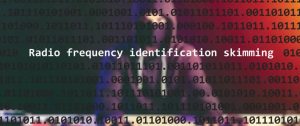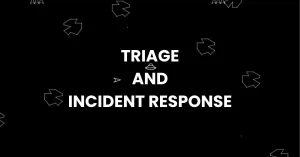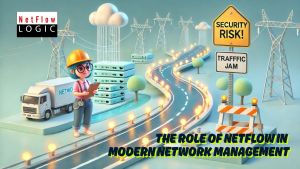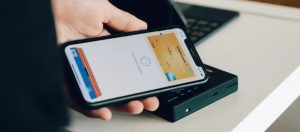
You did it. Many months ago, you sent your employees home armed with their laptops, a few passwords, and a couple of Zoom invites. Now, hunkered down in their stretchy, comfy clothes, thankful for not having to commute, they’re carrying on the day-to-day business responsibilities for your organization.
But is it really business as usual? Or is your remote workforce a ripe target for data security breaches? If you haven’t yet experienced a negative data security issue as a result of this new work structure, take some proactive steps now to ensure you won’t down the road, as this work-from-home model most likely won’t be going away anytime soon.
According to a survey by Price Waterhouse Cooper, 83 percent of workers want to work from home at least one day a week and 55 percent of employers anticipate most of their workers will do so long after the pandemic has passed.
What is Data Security?
In a nutshell, data security is everything surrounding the identification and protection of sensitive data to ensure it remains secure throughout its lifecycle. In terms of how this relates to remote workforces, data security is what protects this data not only through its lifecycle, but also wherever it happens to be stored – on-premises, in the cloud, or on a laptop sitting on the dining room table.
Industry regulations such as HIPAA, SOX, and the GDPR as well as certain data types, such as Payment Card Information (PCI) or Personally Identifiable Information (PII) all requires data security measures to ensure compliance and data privacy.
The numbers don’t lie and they’re not pretty – data breaches are a massive problem – and can only intensify with a remote workforce unless risks are mitigated. According to Risk Based Security, over 36 billion records were exposed by the end of Q3 2020 alone.
How Do Remote Workforces Put Data Security at Risk?
Collaboration Shortcuts: Data security is put at risk by the very nature of what you are asking your employees to do remotely—collaborate by synching and sharing files. By sending sensitive files to each other and to third parties, the security of those files can be easily compromised, unless protected with secure file transfer solutions such as managed file transfer (MFT) incorporating the solid encryption methods.
Free File Sharing Solutions: If you don’t give your users an easy-to-use, secure file sharing option, chances are high they will use one that’s already familiar to them, such as Dropbox, unsecured email, Google Drive, Box, and others. While these may be fine for personal use, when it comes to protecting your organization’s sensitive files, they just can’t provide the protection you need.
An MFT solution, like GoAnywhere, offers a familiar, dashboard-style user interface as an easy, user-friendly option to those free file sharing methods and clunky homegrown scripts. The software’s centralized control, extensive security settings, and detailed audit trails deliver the security needed, with the ease-of-use your distributed workforce needs to easily adopt this file sharing method.
Human Error: Let’s face it, humans are fallible, and when juggling the demands of working remotely, mistakes can and will be made. Are you 100 percent confident your employees are sharing all your sensitive data securely every time? Can you count on your file transfers going through or do you dread getting that call from your trading partner that they never received the file they were expecting?
When you add automation to your file transfer method, you can rest easier, no matter where your workforce is sending files from – even from a home office. Automatic file transfer software allows users to program when and how files should move between internal systems, users, or trading partners. You can schedule workflows to run using a built-in schedule and set up triggers to monitor for specific events, including when files are uploaded or downloaded. And you can get alerts long before your trading partner ever discovers a file transfer was interrupted.
Lack of Encryption: Those sensitive files need protection both while they are at rest and when they are in motion. Encryption protocols help ensure your data is locked down securely, with only the right users accessing files. Help your dispersed workforce avoid breaching any industry compliance mandates, like PCI DSS, state privacy laws, federal regulations such as HIPAA, Sarbanes-Oxley, the GDPR, and more by ensuring you have the right encryption standards in place. The most popular ones are FTPS and SFTP. While FTPS authenticates a connection using a user ID and password and/or a certificate, SFTP allows you to use two different methods — encrypted user ID and password or an SSH key — for user ID authentication.
For a free PGP tool that supports basic encryption, decryption, file signing, and document verification, you can download GoAnywhere’s Open PGP Studio. For an enterprise-level compliance, automation, auditing, and reporting solution, GoAnywhere Managed File Transfer supports Open PGP encryption as well as industry-standard file transfer protocols, internal collaboration features, and robust security settings.
Reduce Remote Workforce Cybersecurity Risks
To give your organization the best defense against data security threats, you need to look at your organization’s data vulnerabilities and put in place the enterprise-level of solutions to best address them, while keeping the solutions user-friendly for employees now working without their friendly tech support team just down the hall.
Fortra’ suite of data security solutions can help your remote workforce better manage sensitive data and maintain compliance. In addition to using secure, managed file transfer, organizations should also consider adaptive data loss prevention, which can help protect your metadata, to provide 360-degrees of data protection for your distributed workforce.
Just giving your employees the right tools is not enough. You need to also communicate the need to use the right ones. In one study, researchers found half of all employees admitting to cutting corners when working from remotely, including circumventing secure systems. Make sure you enable a more secure workplace away from the usual workspace by installing secure, easy-to-use solutions, letting staff know what’s available and how to use them and discussing why less secure alternatives are to be avoided.
Source: https://www.goanywhere.com/blog/how-a-remote-workforce-impacts-your-data-security?
About DT Asia
DT Asia began in 2007 with a clear mission to build the market entry for various pioneering IT security solutions from the US, Europe and Israel.
Today, DT Asia is a regional, value-added distributor of cybersecurity solutions providing cutting-edge technologies to key government organisations and top private sector clients including global banks and Fortune 500 companies. We have offices and partners around the Asia Pacific to better understand the markets and deliver localised solutions.










